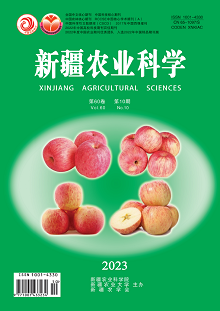【Objective】 In order to clarify the comprehensive benefits of cotton fields added with organic materials under different amounts of phosphorus fertilizer. This experiment provides theoretical and technical reference for establishing scientific fertilizer dosage and providing phosphate fertilizer dosage in cotton field.【Methods】 Using the field test method, Different amounts of organic material added (organic acid, organic fertilizer, biochar) ( kgP2O5/hm2, 50 kgP2O5/hm2, 100 kgP2O5/hm2, 150 kgP2O5/hm2) Dual-factor test treatment, Using the radar map analysis method, In terms of cotton yield, economic benefits, phosphate fertilizer utilization rate, soil phosphate effectiveness, soil microbial indicators (alkalidase activity, microbial biomass), The benefits of different treated cotton fields in 2020 were comprehensively evaluated.【Results】 According to the vector comprehensive evaluation function, MAP0 + CK, MAP50 + CK, MAP100 + CK, MAP150 + CK, MAP0 + OF, MAP50 + OF, MAP100 + OF, MAP150 + OF, MAP0 + OA, MAP50 + OA, MAP100 + OA + OA, MAP150 + O A, MAP0 + BC, MAP50+BC,MAP100 + BC, MAP150 + BC were 0.6099,0.8967,0.9215,0.9133,0.6103,0.8327,0.9988,0.9035,0.6366,0.9378,0.9163,0.7839,0.7654,0.9411,0.9452,0.8753.【Conclusion】 Comprehensive analysis believes that a certain amount of phosphorus fertilizer (100 kgP2O5 /hm2) with organic fertilizer regulation is the optimal fertilization result of cotton fields, While the amount of phosphate fertilizer used at 100 kgP2O5 /hm2 is the gradient-optimal, For 50 kgP2O5 /hm2 + OA, Biochar-regulated 100 kgP2O5 /hm2 +BC, The addition of organic fertilizer regulation is 100 kgP2O5 /hm2 + OF is optimal; Under the reasonable amount of phosphate fertilizer used, The increased application of organic matter materials can improve the comprehensive benefits.

